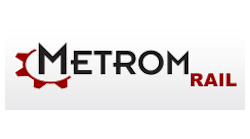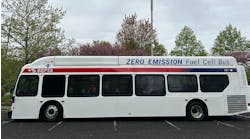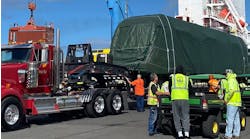In September in Hoboken, New Jersey, an NJ Transit train traveling twice the posted speed limit crashed into a bumping post. One person died, and more than 100 were injured. In Chicago in 2014, an L train plowed through the barrier at O’Hare International Airport and up an escalator. The crash injured 30 people and caused about $9 million in damage. And in 2009 in Washington D.C., a Red Line train slammed into a train stopped in front of it, killing nine and injuring 80.
While many transit agencies have never experienced headline-grabbing accidents such as these, they feel pressure to quickly make safety improvements in the aftermath of any incident. And the resounding advice from the public, media and government agencies is often to implement positive train control (PTC).
Congress mandated Class I freight railroads as well as intercity and commuter passenger rail lines to implement positive train control by the end of 2015. The process of implementing PTC has been slow, and, as a result, Congress extended the deadline to the end of 2018. Despite the delay, transit agency leaders know quick action on safety is needed.
Designed to prevent train collisions and derailments, PTC can be an effective tool for improving passenger and roadway worker safety. But many traditional industry options for PTC deployment are not well suited for transit lines. Most legacy PTC solutions require large infrastructure overhauls, complex back-office operations and significant upfront investments. They also can put constraints on passenger throughput and are usually hemmed in by the limits of radio frequency technology, which can be ineffective in crowded metropolitan and underground environments.
So, if a transit agency opted to implement one of the traditional PTC solutions on the market, safety improvement efforts could be costly, delayed for years and potentially even ineffective. This vexing quandary inevitably leads to a never-ending cycle of deferred safety improvements and prolonged angst for transit agency leaders.
A pressing need for safety improvements
Current safety systems in transit are generally outdated and insufficient. For example, many lines rely on automatic braking systems. These are often reactive and don’t preemptively prevent incidents. So, the train eventually stops, but it may be halfway up the escalator by the time it does. Compounding the safety challenge, transit agencies face persistent budget constraints and increasing passenger loads.
Since traditional PTC systems were not originally designed for these passenger rail systems, transit agencies also find themselves weighing options that don’t suit their needs or add unnecessary cost and complexity to the process.
The good news is that PTC solutions tailored to transit needs are beginning to emerge. For example, modern cost-effective solutions that overlay existing infrastructure can improve train control and collision avoidance with minimal installation time. With built-in features such as roadway worker protection capabilities, these systems also minimize the complexity that comes with having to layer on myriad solutions from different suppliers. Further, by leveraging advanced ranging technology, these solutions can operate more successfully underground.
Focus on core safety priorities
There are many combinations of solutions and suppliers that can create an appropriate and effective PTC system for a transit agency. To start the process of choosing the right technology, transit agencies need a comprehensive understanding of their system and needs, including geographic requirements, ridership trends, system capacity, and future plans for expansion. Based on this, they can create a prioritized list of operational requirements for any safety solution.
For example, does the agency anticipate a large increase in riders over the next 10 years? If so, an overlay solution that improves safety and facilitates greater throughput capacity and flexibility should be at the top of the list. Or, does most of an agency’s track run underground? If that’s the case, it should opt for a solution that incorporates advanced ranging technology over something like a communications-based train control system, which typically relies on radio frequencies that can be susceptible to interference.
Once an agency has a baseline understanding of its requirements and priorities, it must thoroughly vet and test solutions, and scrutinize performance claims. Agencies should weigh the various features of different solutions and see where they align with the agency’s defined operational needs.
Further, it’s important that agencies ensure suppliers can cater to their needs. In some cases, agencies end up having to adapt their operation to the new safety system in significant ways. This can have an adverse impact on current processes and throughput.
Overall, it’s time for transit to broaden its horizons when it comes to safety and understand that the safety technology landscape does not begin and end with the traditional slate of PTC solutions. Technology is rapidly evolving and powering new PTC solutions for transit agencies. If transit leaders take a hard look at their core requirements and see how they match up with the wide range of advanced solutions emerging on the scene, they can open themselves up to a world of new options that enable real safety improvements and enhanced operations.
Rick Carlson Jr. is the director of corporate strategy for Metrom Rail, a developer and integrator of rail safety technology.




